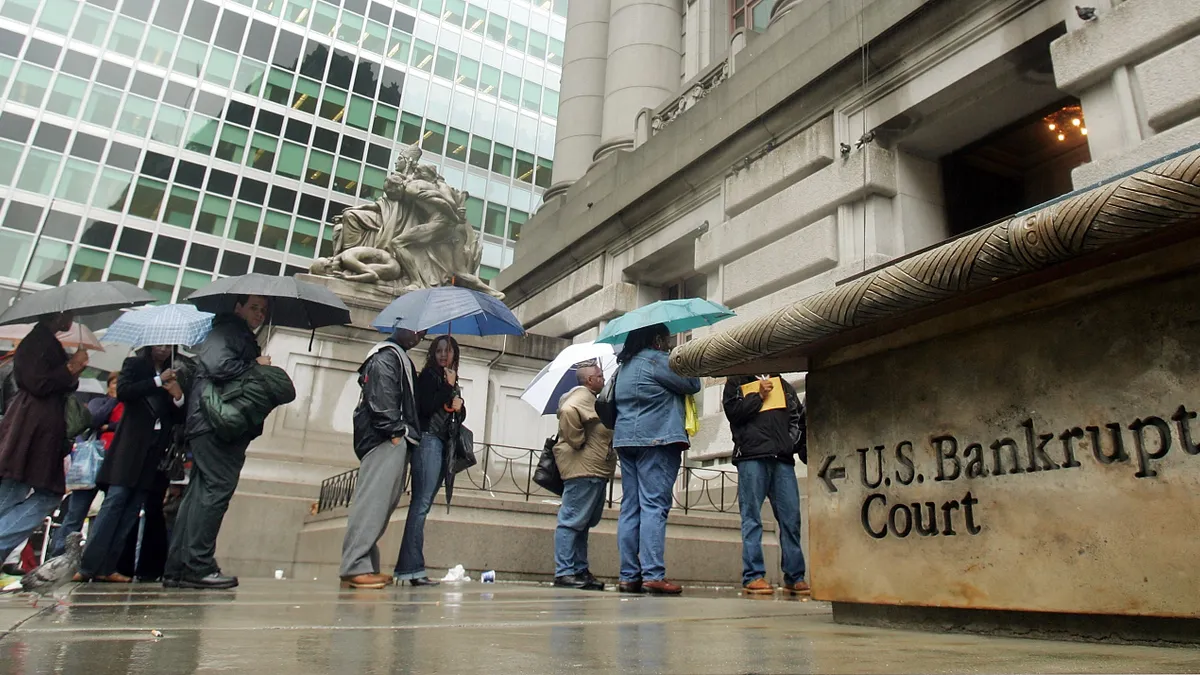Business insolvencies worldwide are likely to jump year-over year in 2023, with a bigger spike projected in the U.S. alone, according to recent analysis from Allianz Trade, a unit of the Allianz Group insurance giant.
Allianz’s insolvency index is set to rise 21% globally this year and 49% in the U.S., which would mark an acceleration of a trend that began last year after two straight years of decline, according to the findings.
The two main drivers are a global slowdown in demand — and consequently trade — plus increasingly tight financing conditions, according to Maxime Lemerle, Allianz Trade’s lead analyst for insolvency research. Together, the headwinds are putting increased pressure on companies’ profitability.
The report discusses a number of scenarios that could shift the insolvency outlook. For example, U.S. and Eurozone insolvencies could be stabilized if the regions’ GDPs rise higher than anticipated. The analysis focused broadly on “insolvency,” which is when an entity cannot pay a debt, rather than bankruptcy, a legal proceeding initiated by a person, entity or business that is insolvent.
Due to the widespread nature of the insolvencies that are anticipated, Lemerle said that CFOs will need to assess their relationships with other companies, especially those that may be at financial risk.
“If the other company is a client, the risk of non-payment significantly increases. If the other company is their supplier, supply chain disruption can be expected and may be critical for specific inputs. If the other company is a competitor, opportunities for new business may emerge, which theoretically may increase pricing power, provided the demand remains stable or keeps on growing,” Lemerle wrote in an email sent to CFO Dive.
While the bulk of these insolvencies will comprise small and medium sized businesses, Allianz projected that some larger firms will be insolvent as well, which implies a greater risk of domino effects. Globally in the fourth quarter of 2022 the report found 88 major companies experiencing insolvency, which was slightly above pre-pandemic levels.
The report found that sectors which are especially vulnerable include those that don’t have as much pricing power, such as restaurants and specialized retail, those in labor intensive sectors such as transportation or constructions, and those most exposed to rising interest repayment costs, like the durable goods sector.
The future is uncertain and that distress could deepen even further than forecasted if there is a more severe financial crisis like that seen in 2008 or a credit crunch of the magnitude seen in the early 2000s during the dot-com bust.
As it stands though, even as U.S. insolvencies are expected to rise, they will still be at a historically low level. The report expects the U.S. is entering an era where it will see about 20,000 insolvencies a year, which is roughly within the average for 2016-2020.
It is “the legacy of buffers accumulated since the pandemic, helped by the recovery in profits and the Paycheck Protection Program (PPP), which saw government-guaranteed loans massively transformed into subsidies,” the report states.










